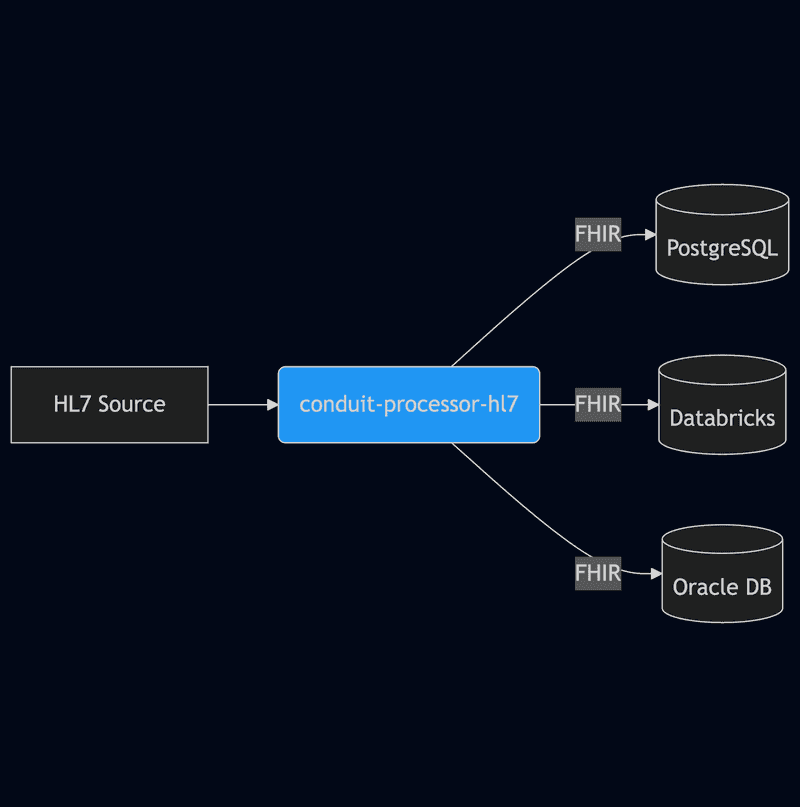
Healthcare shouldn’t have a lag time.
But across hospitals, clinics, and digital health platforms, data still moves like it’s 2004—slow, siloed, and stuck in outdated workflows. A patient is admitted, but the specialist won’t see the file for days. A lab result is finalized, but no system knows what to do with it.
That changes now.
Meroxa is officially HIPAA certified, and we’ve built native processors for HL7 and FHIR—the dominant healthcare data formats. That means you can stream, transform, and act on clinical data the moment it’s created.
No more waiting. No more manual handoffs. Just secure, real-time healthcare infrastructure that works.
🧬 The Real World Still Runs on HL7
HL7 v2 is the backbone of U.S. healthcare data. It powers:
- ADT (Admission/Discharge/Transfer) events
- Lab results
- Pharmacy orders
- Billing workflows
But developers know the struggle: pipe-delimited fields, cryptic segment codes, and brittle custom integrations.
MSH|^~\&|LABHOST|LAB|CIS|CIS|202402041030||ORU^R01|12345|P|2.3
PID|||PATID1234^5^M11||JONES^WILLIAM^A^III||19610615|M
OBR|1|8642753100012^LIS|20809880170^EHR|93000^ECHOCARDIOGRAM^^93000
OBX|1|ST|93000^ECHOCARDIOGRAM||NORMAL|||N||F|||202402041025It’s powerful, yes—but it wasn’t built for real-time AI or modern APIs.
⚡ Enter FHIR—and Meroxa
FHIR (Fast Healthcare Interoperability Resources) adoption is accelerating, with global regulatory backing and growing adoption among health tech companies. It’s modern, flexible, and machine-readable as seen below:
{
"resourceType": "Patient",
"identifier": [{
"system": "urn:oid:1.2.36.146.595.217.0.1",
"value": "12345"
}],
"name": [{
"family": "Smith",
"given": ["John"]
}]
}But HL7 isn’t going away anytime soon.
Meroxa’s Conduit platform handles both, streaming HL7 v2 or FHIR in real time, with automatic bidirectional translation between the two formats.
Your systems speak different languages. We make them fluent.
📉 From 5 Days to 10 Seconds
A US-based national healthcare provider came to us with a familiar challenge: HL7 files dropped onto an SFTP server, sent in batches, processed by custom scripts. On average, it took 2–5 days to get data into their downstream systems.
With Meroxa, we replaced all of it with a real-time pipeline:
- HL7 messages were detected instantly
- Transformed to FHIR on the fly
- Synced to PostgreSQL, Oracle, and Databricks—in seconds
No new infrastructure. No code rewrites. Just faster, better care delivery.
🔄 Under the Hood
Meroxa + Conduit gives you:
- Live HL7↔FHIR conversion via a single processor
- Low-code pipeline builder with YAML support for custom workflows
- Exactly-once delivery, with built-in dead-letter queues
- Cloud-agnostic deployment (AWS, Azure, GCP)
- Streaming + batch support, scaled to 70,000+ msgs/sec
- id: hl7-fhir-processor
plugin: conduit-processor-hl7
settings:
inputType: hl7
outputType: fhirLive Demo: Multi-Destination Healthcare Data Pipeline
To demonstrate how Conduit tackles healthcare data challenges, let's walk through building a complete data pipeline that processes HL7 data in real-time. Here’s the architecture of what we’ll be building:
Meroxa SFTP to HL7 Demo Video
https://www.youtube.com/watch?app=desktop&v=uRJ67FkdjrU
1. Setting Up the Data Flow
In this example, we're building a pipeline that:
-
Monitors an SFTP server for incoming HL7 files
-
Processes and converts the data to FHIR format when needed
-
Simultaneously delivers the data to multiple destinations:
- PostgreSQL database
- Oracle database
- Databricks
2. Creating the Pipeline
Using Conduit's platform, we:
- Create a new application
- Configure an SFTP source connector with proper credentials
- Add three destinations: PostgreSQL, Oracle, and Databricks
- Attach our custom HL7 processor to handle format conversion
- Add additional processors as needed for specific destination requirements
3. Results: From Days to Seconds
With this pipeline deployed, what previously took up to 5 business days now happens in seconds:
- Patient records are detected immediately when uploaded to the SFTP server
- Data is automatically transformed and delivered to all three destinations simultaneously
- Our test patient record "Tremaine Stanton" appears in all systems in real-time
🧠 What Teams Are Building with Meroxa
- Real-Time ADT Notifications → routed instantly to care teams
- Live Lab Result Streaming → to EHRs, public dashboards, or AI alerts
- Prior Auth Automation → kick off workflows the moment orders hit
- Predictive Readmission Alerts → powered by real-time FHIR streams
- Multi-Destination Sync → from legacy EHRs to modern warehouses
It’s not just faster. It’s smarter, more scalable, and easier to maintain.
📈 The Impact
- Faster care decisions → no waiting on faxes or manual exports
- Lower operational cost → eliminate duplicate tests and data errors
- Better compliance → every message traceable, every pipeline secure
- Future-proof infrastructure → bridge legacy HL7 to FHIR and AI, today
🚀 Ready to Modernize Healthcare Data?
Meroxa helps healthcare teams unify fragmented data, power intelligent workflows, and move at the speed of care.
You don’t have to choose between legacy systems and modern AI.
With Meroxa, you get both—live and secure.

